Family photographs, dolls, antiquated televisions, painted icons on the walls, all situated at the top two floors of Istanbul’s Pera Museum, cast a spell on the viewer with a synthesis of past and present. World-famous director Sergei Parajanov’s story sets the scene with annotating panels, pictures and a documentary by Patrick Cazals, The Rebel, Sergey Parajanov (France, 2003). The gallery holds artefacts from the final stage of Parajanov’s artistic endeavour following his imprisonment.
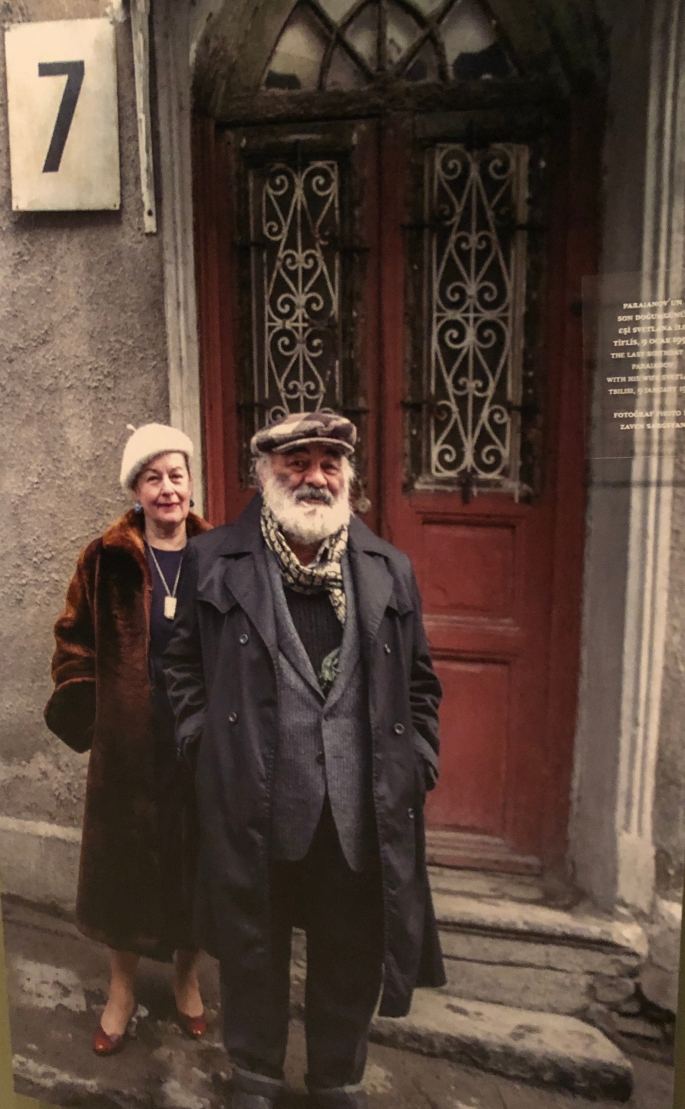
Prior to their permanent display in Parajanov Museum in Yerevan, his collages, dolls, ceramics and paintings resultant from his irrepressible creativity he had hardly found the means to relieve through cinema, were exhibited in Tbilisi Cinema House (1985) and later in Folk Art Museum, Yerevan (1988). He had been in and out of labour camps and prisons throughout his life, the first ensuing questions over his sexuality.
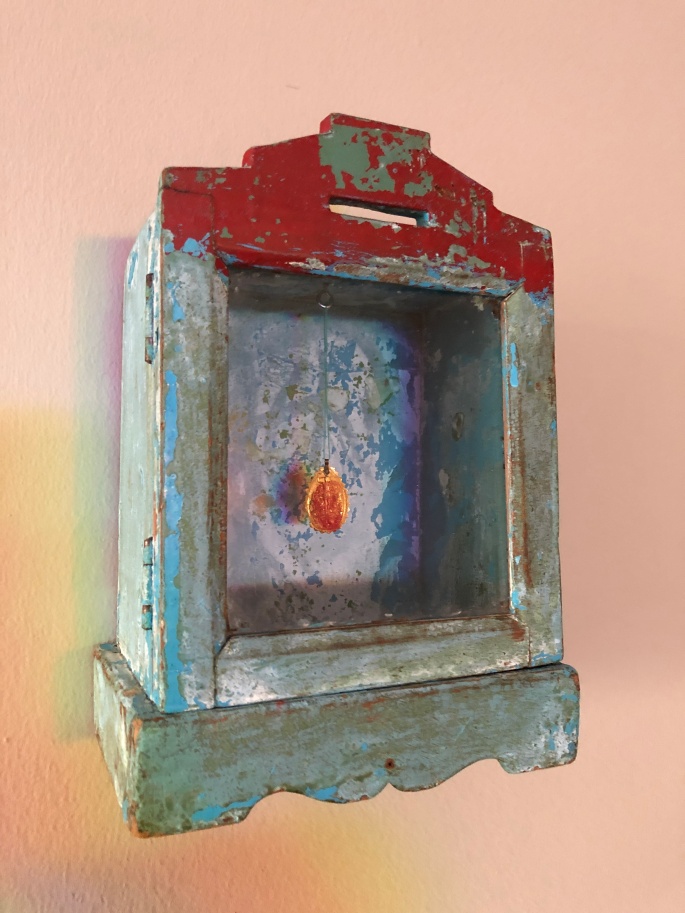
Istanbul-born Armenian contemporary artist Sarkis’ ode to Georgian filmmaker (1924-1990) and his cult movies he managed to fit into his career cut short by the Soviet interference, awaits the viewer as the final chapter of Parajanov with Sarkis exhibition. (Dec. 13, 2018 – Mar. 17, 2019) The duplex exhibition summons thoughts on creativity, politics, power, control, suffering, gender, identity, literature and cinema but above all it evokes love. Perhaps at a time when unknown means enemy and politics favour populism more than ever, love is all we need.
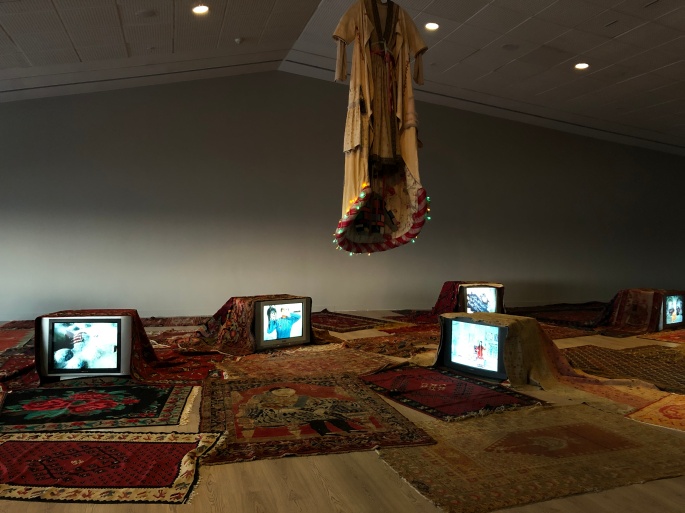
Sarkis, like Parajanov, plays with materials he finds and attributes meanings to these otherwise discarded objects. The entire floor seems to portray scattered images from Parajanov’s life and films but this time from Sarkis’ point of view. Half of the storey is occupied by old televisions displaying scenes from Sayat Nova that are covered by rugs. These magical carpets that were being washed atop dome roofs just a second ago, fly off the screen and land on these televisions as the wind blows outside. Above hangs The Cloth of Een Overnachting op Oud Ameliweerd (2000) consisting of fabrics, light garland and slippers. The “suffering soul” hovers over the installation. The colourful lights shining from the skirts of the attire begin to merge with the city lights shimmering from a distant city silhouette. Sarkis offers pomegranates on a tray as Kartlis Deda, the symbolic mother of Georgians offer wine to all welcomed guests on top of Sololaki Hill. He borrows these fruits from Parajanov’s Sayat Nova, which the director later titled The Color of Pomegranates.
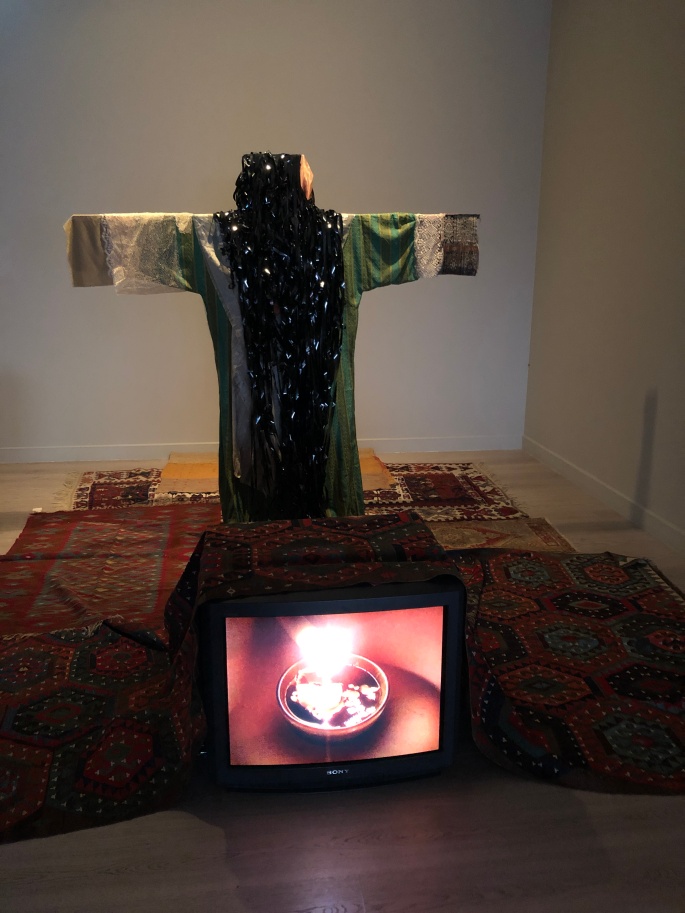
Portrait of Parajanov (2011) stands tall over the old television as if conjuring the spirit of Parajanov. Made from ancient Turkish fabrics, VHS bands of Parajanov films and a wooden structure, the installation, mirrors a work of Parajanov presented downstairs. Rainbow colours imitating a pride flag compel attention to the filmmaker’s signature in Armenian, paired with a framed and painted photograph of him. His identity as a multicultural, queer genius has caused as much wonder for the world as it has caused him pain. Especially when placed just a few steps away from the emblematic Istiklal Street, where until recently mass gatherings, protests and celebrations were held, the exhibition reminds us that we’re not alone.


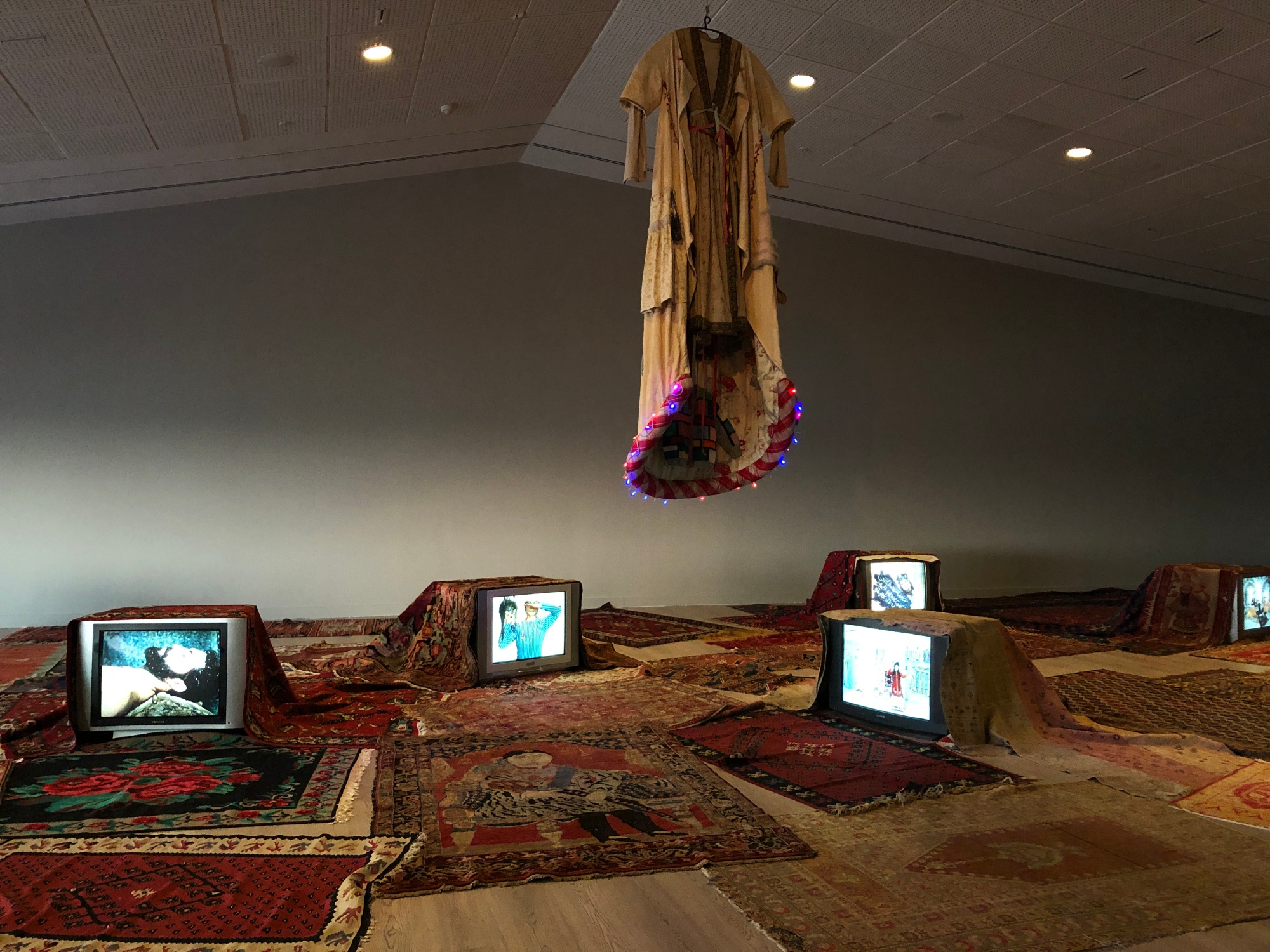
👏👏👏🥰🥰🥰
Arzu Karaahmetoğlu Yıldırım
0090 533 1651766
> Art Worldwide şunları yazdı (7 Eki 2019 13:03): > > >
LikeLike